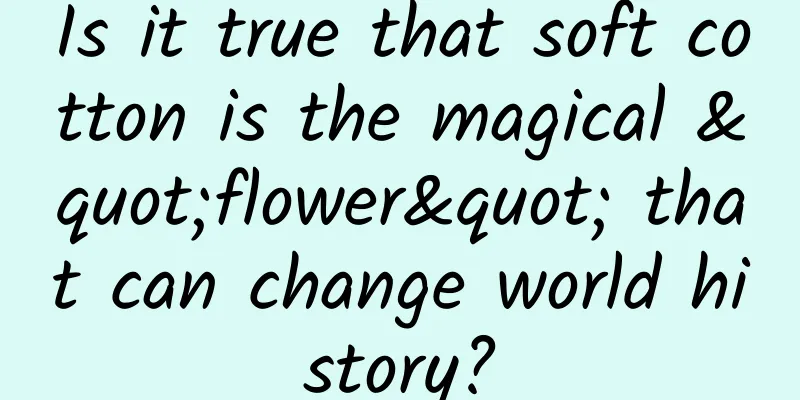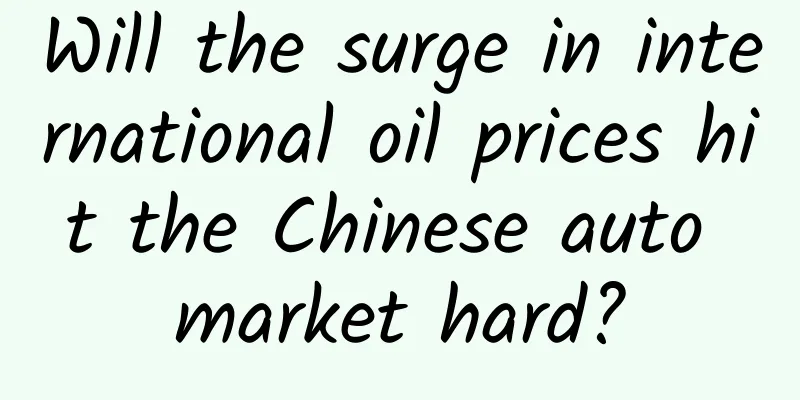Is it true that soft cotton is the magical "flower" that can change world history?

|
Magellan was determined to go around America in search of spices, but he didn't know that there was a kind of "white gold" in America, whose potential market was thousands of times that of spices. For 500 years, there has been fierce competition among major powers, and cotton has been a powerful player hidden behind the scenes. From a small village in Mexico to the world In 1520, Magellan was leading the Spanish fleet, stumbling along the east coast of South America, looking for a sea route around the American continent. At the same time, Hernán Cortés led a Spanish expedition team into the inland plateau of Central America and discovered the powerful Aztec Empire. It took only one year for Cortes to destroy the Aztec Empire, and this Spanish invasion also changed the distribution of world power for the next few hundred years. At that time, there were a dozen small villages along the Pacific coast of Mexico, growing a local cotton. The villagers laboriously hand-pulled the cotton seeds; patted the cotton to soften it; twisted it into a few inches of cotton yarn; then twisted the yarn into white thread with simple tools such as spindles; and finally used two wooden sticks, one hung on a tree and the other hung on the body, to straighten the warp yarn and weave the weft yarn back and forth to weave the cotton thread into cotton cloth. The cloth was soft and strong. The villagers used indigo and cochineal to dye blue and red cloth. They paid tribute to the Aztec Empire every year. In 1518 alone, 12 coastal villages paid tribute of about 40 tons of cotton, 3,200 bolts of dyed cloth, and 4,800 bolts of white cloth. Cotton is not a flower, but the fluff inside the fruit that protects the seeds. There are various types of cotton in the world, but only four have been domesticated - African cotton, Asian cotton, American continental cotton, and American sea island cotton. 5,000 years ago, people on the coast of Peru were using cotton. About 5,000 years ago, people in the Indus River basin began to weave cotton cloth. Herodotus traveled in India more than 2,500 years ago and wrote in his book: "There is a kind of hair growing on wild trees, which is more beautiful than wool. Indians use it to make clothes." African cotton (also called grass cotton, an annual plant) originated in tropical Africa and was introduced to Egypt more than 4,000 years ago, and later to the Middle East. The cotton grown in the world today is basically American continental cotton, and a small amount of American sea island cotton. American continental cotton was introduced from Mexico to the southern United States in the early 17th century, and later spread to the world, replacing the cotton of the Old World. Not everyone can afford to wear tropical treasures Cotton is soft, light, strong, easy to dye, and easy to wash. It's perfect! And it's cheap. You can buy a pure cotton vest for 20 yuan. Wear it in winter, summer, sports, and sleep. Cotton is the cutest and most affordable flower. But 500 years ago, cotton was a high-end material that not everyone could afford, and many people had never even seen it. The four major fibers in ancient times were linen, wool, silk, and cotton. Cotton was not easy to promote because it prefers heat to cold and cannot survive the winter in slightly cold places. It also cannot grow in places that are too humid. It took hundreds of years of exploration and breeding for people to introduce cotton to places where it did not grow originally. However, it was not until the Han Dynasty that Asian cotton was planted in Lingnan. African cotton was introduced to Xinjiang in the 3rd century and to the Central Plains in the Tang Dynasty. Cotton was not planted in the Yangtze River Basin until the Song Dynasty. Before the Yuan Dynasty, Hainan Island was the most advanced place in China's cotton textile industry. Later, cotton for Jiangnan textile was also purchased from Hainan. Europeans were familiar with cotton and loved cotton textiles as early as the Greek and Roman eras. However, the European climate was not suitable for growing cotton. Spain grew cotton in the 10th century. In the early 12th century, cotton began to be grown in northern Italy and later spread to France. However, Europeans still had to import raw cotton from Egypt and Syria. After the Industrial Revolution, cotton began to be grown in large quantities on tropical islands in the Caribbean, freeing Britain from its dependence on cotton from the Old World. Europe is no match for Türkiye, Türkiye is no match for India In the Middle Ages, the prosperity of cities such as Milan, Venice, and Bologna depended on cotton. Europeans learned from the Middle East and spun a kind of denim by mixing cotton and linen. In 1450, there were 6,000 workers in Milan engaged in the production of this denim. Italy's wool textile industry has a long history, and wool textile companies have good technology and abundant funds, so they switched to cotton and thrived. They gave the raw cotton to rural women to spin, and then transported it to the city for craftsmen to weave cloth. Venice was the first cotton distribution center in Europe. It not only bought cotton from the Middle East, but also introduced global technology. In the mid-13th century, the spinning wheel was introduced to Europe. This tool, which they called the "cotton wheel", increased productivity by three times. At the same time, the horizontal pedal loom was also introduced to Europe, allowing weavers to adjust the device with their feet, freeing up their hands to thread the weft. In the second half of the 14th century, the Germans came from behind and switched from linen textiles to cotton textiles. Germany surpassed Italy because rural labor was cheaper. For example, in Ulm, the center of the cotton industry, there were 2,000 urban residents producing cotton textiles, but there were 18,000 rural workers engaged in the cotton industry. The cost of migrant workers was much lower than that of urban workers organized by guilds. The Fugger family, which wove cotton cloth in southern Germany, became a commercial and financial tycoon with snowballing wealth. More than 100 years later, the family also invested in and supported the overseas expeditions of the King of Spain. In this way, the cotton industry is related to the Age of Exploration. In the 16th century, the newly rising Ottoman Empire encouraged the development of the domestic cotton textile industry and restricted the export of Middle Eastern raw cotton to Germany and Italy under the enemy Habsburg dynasty. The Ottomans cooperated with the British to deliberately strangle the cotton industry of Italy and Germany, causing the cotton industry of the two countries to decline. Turkey and India had a trade deficit in cotton cloth because rural labor in India was cheaper. In China, the Yuan Dynasty began to vigorously promote cotton. Egyptian cotton was planted in the north, and Indian cotton was planted in the south, collectively known as "kapok". Zhu Yuanzhang also ordered that "every citizen with 5 to 10 mu of land should plant mulberry, hemp and kapok, each half an mu, and more than 10 mu should double the amount". From then on, Chinese farmers had an indissoluble bond with cotton. The cotton textile industry in Jiangnan became more and more prosperous, and cotton textiles sold well all over the world. Jiangnan's "Nanjing cloth" was exported to Europe in large quantities. It was light purple, thin and close to the skin, and very popular among Europeans. In short, before the Industrial Revolution, small farmers were the main force in the cotton industry, and they intercropped cotton with crops or vegetable fields. Cotton fabrics were not affordable for ordinary people. The chain reaction of the Industrial Revolution has promoted the transformation of the world's cotton industry Starting from the 17th century, Britain's spinning jenny and mule loom, as well as water turbines and steam engines, left other nations far behind. The British learned the lesson of the European cotton industry being strangled in the Middle Ages and were determined to control the cotton production areas. They protected the interests of British textile factories and relied on discriminatory tariffs in India to suppress the export of cotton textiles from India and encourage the export of raw cotton. This led to the bankruptcy of India's small peasant economy and great social changes. The vast newly reclaimed land in the southern United States was planted with cotton, which was more profitable than gold mining. As written in "Gone with the Wind": cotton is the heartbeat of this county, and the heart expands and contracts with the planting and harvesting of cotton. At one time, 82% of the raw cotton in Britain came from the United States. In China, the high quality and low price of British cotton textiles also defeated the cotton farmers in Jiangnan. By 1831, China's cotton textile trade changed from a surplus to a deficit for the first time. In order to dump cotton cloth, Britain used war to force the Qing government to open more free trade ports. In 1892, Zhang Zhidong, a senior official in the late Qing Dynasty, imported cotton seeds and distributed them to various places in Hubei for trial planting. Because they did not know how to plant them, the harvest was scarce. The following year, Zhang Zhidong bought seeds again and issued the "American Cotton Planting Method" instruction manual. In 1915, Jinling University introduced and improved American cotton; in 1920, American professor Guo Renfeng presided over the breeding of three major varieties, opening up China's modern cotton planting industry. Today, China is the world's largest cotton consumer and the second largest cotton producer. |
Recommend
Why do unoccupied houses age so quickly?
I don’t know if you have ever seen those vacant o...
Science and Technology News Morning Express丨my country's research team extracted nearly perfect quantum entanglement for the first time
>> Chinese scientists have made important p...
Four scenarios that are best suited for RxJava
RxJava is a very popular functional responsive pr...
Opinion: We have overestimated the economic benefits of artificial intelligence
Are we overestimating the impact of generative AI...
Mr. Persistence: Delay training video course, teach you how to control delay skills
Mr. Persistence: Delay training video course, tea...
Top 10 keywords for website navigation in 2015
1. Polarization <p class="MsoListParagraph" st...
GAC Aion "stabs" the magazine battery again, setting a new height in the safety of lithium iron phosphate batteries
In March this year, GAC Aion launched the world&#...
Offline payment war among giants: WeChat's offensive is fierce, while Alipay survives in adversity
Under the fierce attack of WeChat for two consecu...
What does "starting with an egg" mean? This is called native advertising!
When doing information flow advertising , the mos...
What's wrong with breathing through your mouth?
Recently, there has been a lot of discussion abou...
Why is the new coronavirus always one step ahead of others?
As long as there are susceptible people, the viru...
Drainage is ineffective? Try these 4 methods
Your drainage is not effective? It’s not that the...
Foreign media: Mechanical hard drives are not dead, ultra-high capacity products are their future
According to foreign media reports, Nidec Corpora...









